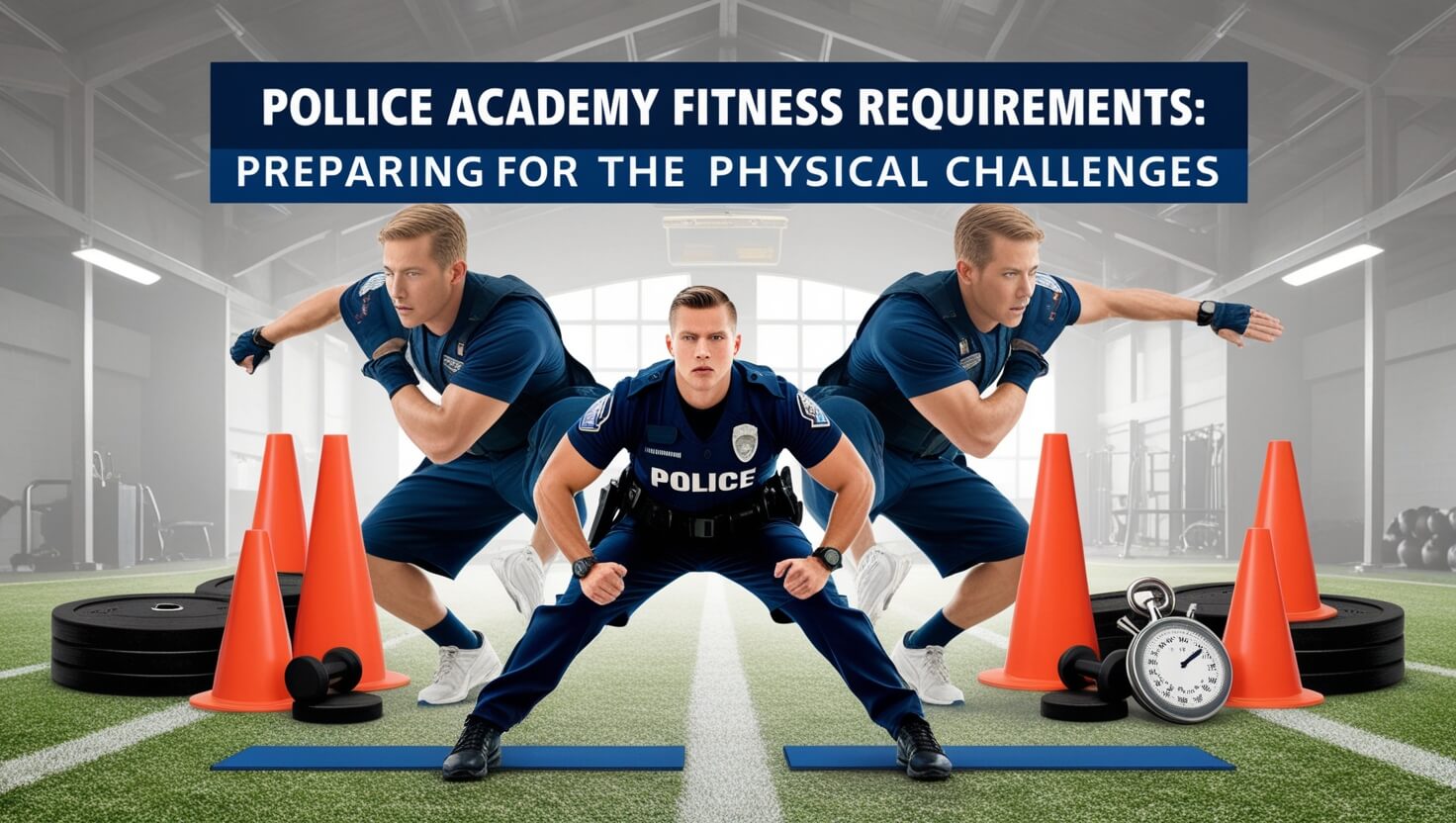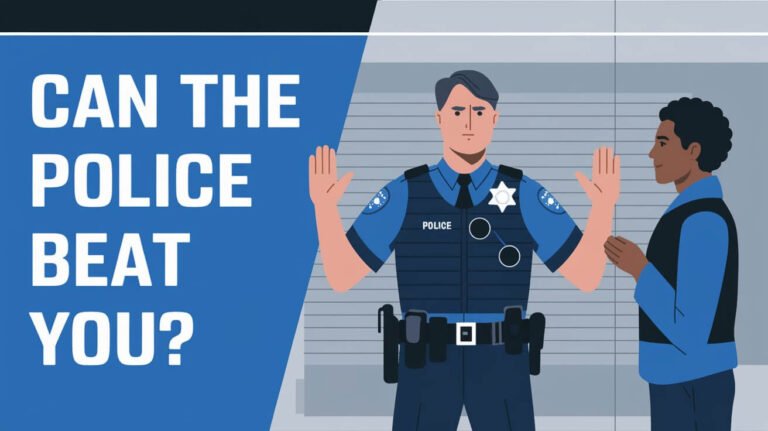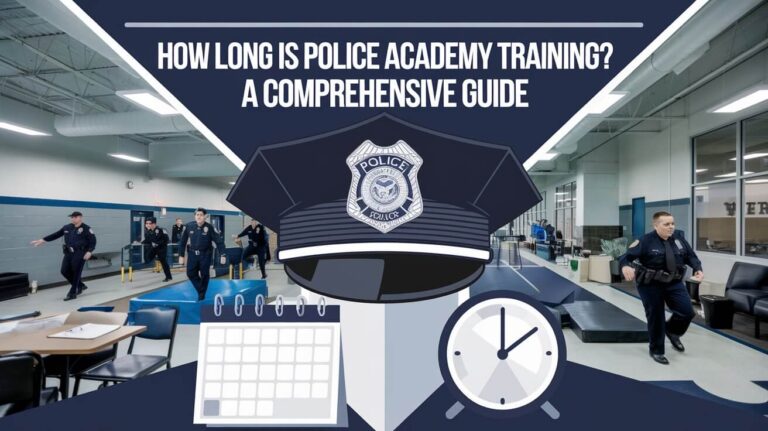Police Academy Fitness Requirements: Preparing for the Physical Challenges

Police academy fitness requirements are a crucial part of becoming a law enforcement officer. These standards ensure that recruits have the physical capacity to perform their duties effectively and safely. Aspiring officers must meet specific benchmarks in strength, endurance, and agility to qualify for training and service.
This guide covers everything you need to know about police fitness tests, from the core components to preparation strategies. We’ll explore age and gender-specific standards, nutrition tips, and long-term fitness maintenance for a successful career in law enforcement.
Introduction to Police Academy Fitness Standards
Fitness is a cornerstone of police work. Officers often face physically demanding situations that require strength, speed, and stamina. The fitness standards set by police academies aren’t just hurdles to clear; they’re essential preparation for the rigors of the job.
Why Physical Fitness Matters in Law Enforcement
Police work is unpredictable. An officer might need to chase a suspect, climb over fences, or restrain an uncooperative individual. Good physical condition can mean the difference between success and failure in these critical moments.
Fitness also plays a role in officer safety and longevity. Fit officers are less likely to suffer injuries on the job and tend to handle stress better. This translates to longer, healthier careers and better service to the community.
Overview of Common Fitness Tests
Most police academies use a combination of tests to assess recruits’ fitness levels. These typically include:
- Running tests for cardiovascular endurance
- Strength exercises like push-ups and sit-ups
- Flexibility assessments
- Agility drills
Each test targets a specific aspect of physical fitness relevant to police work.
Core Components of Police Fitness Assessments
Let’s break down the main elements of police academy fitness tests and what they measure.
Cardiovascular Endurance Tests
Cardiovascular fitness is crucial for officers who may need to pursue suspects on foot or engage in prolonged physical activity.
1.5 Mile Run
The 1.5-mile run is a standard test of aerobic capacity. Recruits must complete the distance within a specified time, usually ranging from 11 to 18 minutes, depending on age and gender.
Tips for improving your 1.5-mile time:
- Gradually increase your running distance
- Incorporate interval training
- Practice pacing yourself
300-Meter Sprint
This shorter run tests anaerobic capacity and mimics the burst of speed often needed in police work.
Training for the 300-meter sprint:
- Practice sprint intervals
- Focus on explosive starts
- Work on maintaining speed over short distances
Strength and Muscular Endurance Evaluations
Officers need both raw strength and the ability to perform repeated physical tasks without fatigue.
Push-Ups
Push-ups measure upper body strength and endurance. Most academies require candidates to perform a minimum number of push-ups within one minute.
Improving your push-up performance:
- Practice daily with proper form
- Incorporate chest and tricep exercises
- Build core strength for better stability
Sit-Ups
Sit-ups or crunches test core strength and endurance. Like push-ups, there’s usually a minimum number to complete within a set time.
Boosting your sit-up count:
- Vary your ab exercises
- Work on hip flexor strength
- Practice timed sets to build endurance
Bench Press
Some academies include a bench press test to measure upper body strength. It’s often based on a percentage of the candidate’s body weight.
Preparing for the bench press test:
- Follow a progressive strength training program
- Practice proper form to prevent injury
- Include supplementary chest and shoulder exercises
Flexibility and Agility Measurements
Flexibility and agility are vital for officers who need to move quickly and adapt to various physical challenges.
Sit-and-Reach Test
This test assesses lower back and hamstring flexibility, important for preventing injuries.
Improving flexibility:
- Incorporate daily stretching routines
- Try yoga or Pilates
- Focus on dynamic stretches before workouts
Vertical Jump
The vertical jump test measures explosive leg power, useful for scaling obstacles or making quick movements.
Enhancing your vertical jump:
- Practice plyometric exercises
- Strengthen your leg muscles with squats and lunges
- Work on your core stability
Specific Fitness Requirements by Age and Gender
Police academies recognize that physical capabilities can vary based on age and gender. Standards are often adjusted to ensure fairness while maintaining high fitness levels across the force.
Standards for Male Applicants
Male applicants typically face higher numerical standards in strength-based tests. For example:
- Push-ups: 30-40 in one minute
- Sit-ups: 35-45 in one minute
- 1.5-mile run: 11-13 minutes
These numbers can vary by department and age group.
Standards for Female Applicants
Female standards are adjusted but still challenging:
- Push-ups: 15-25 in one minute
- Sit-ups: 30-40 in one minute
- 1.5-mile run: 13-15 minutes
Again, these are general ranges and may differ between agencies.
Age-Adjusted Fitness Expectations
Most academies use sliding scales for age, recognizing that physical performance can change over time. For instance, a 20-year-old recruit might need to complete more push-ups than a 40-year-old recruit to pass.
Preparing for the Police Academy Physical Fitness Test
Success in the police fitness test requires dedication and smart training. Here’s how to approach your preparation:
Creating a Training Plan
Start by assessing your current fitness level. Then, create a plan that gradually increases intensity and volume. Include:
- Cardiovascular training
- Strength exercises
- Flexibility work
- Rest and recovery days
Cardiovascular Training Tips
To improve your running performance:
- Mix long, slow runs with high-intensity intervals
- Cross-train with swimming or cycling to reduce impact
- Gradually increase your weekly mileage
Strength Training Strategies
For push-ups, sit-ups, and overall strength:
- Follow a progressive overload principle
- Include compound exercises like squats and deadlifts
- Don’t neglect upper body pulling exercises
Flexibility and Recovery Techniques
To stay injury-free and improve performance:
- Stretch after every workout
- Use foam rollers for self-massage
- Consider yoga or Pilates for overall flexibility and core strength
Common Challenges in Meeting Police Fitness Standards
Even with dedicated training, you may face obstacles. Here’s how to overcome them:
Overcoming Plateaus in Training
If your progress stalls:
- Change up your routine
- Increase intensity or volume
- Ensure you’re getting enough rest and proper nutrition
Dealing with Injuries and Setbacks
If you get injured:
- Seek professional medical advice
- Focus on rehabilitation exercises
- Maintain fitness in unaffected areas
Mental Preparation and Stress Management
Physical tests can be mentally challenging. Prepare by:
- Practicing visualization techniques
- Setting realistic goals
- Developing a pre-test routine to manage nerves
Nutrition and Diet for Aspiring Police Officers
Proper nutrition is crucial for optimal performance and recovery.
Fueling Your Body for Peak Performance
Focus on:
- Lean proteins for muscle repair
- Complex carbohydrates for energy
- Healthy fats for hormone balance
Hydration Strategies
Stay hydrated by:
- Drinking water throughout the day
- Increasing intake during workouts
- Monitoring urine color (aim for pale yellow)
Supplements: Necessary or Not?
While a balanced diet is key, some supplements may help:
- Protein powder for muscle recovery
- Multivitamins for overall health
- Consult a healthcare professional before starting any supplement regimen
Beyond the Academy: Maintaining Fitness Throughout Your Career
Passing the academy is just the beginning. Officers must stay fit throughout their careers.
On-the-Job Fitness Requirements
Many departments have ongoing fitness tests. Stay prepared by:
- Making fitness a daily habit
- Utilizing department gym facilities
- Participating in group fitness activities with colleagues
Balancing Work, Life, and Physical Health
Law enforcement can be demanding. Maintain balance by:
- Scheduling regular workouts
- Involving family in fitness activities
- Prioritizing sleep and stress management
Success Stories: From Out-of-Shape to Top Performer
Many officers have transformed their fitness levels. Here are some inspiring examples:
Real-Life Transformations
- Officer John D. lost 50 pounds and went from failing the fitness test to scoring in the top 10%
- Recruit Sarah M. couldn’t do a single push-up at first but now exceeds the requirements
Lessons Learned from Those Who’ve Done It
Successful candidates often share these tips:
- Start early and be consistent
- Find a workout buddy for accountability
- Don’t get discouraged by setbacks
Equipment and Resources for Police Fitness Training
You don’t need a fancy gym to prepare for the police academy.
Essential Gear for Home Workouts
Basic equipment includes:
- Resistance bands
- A pull-up bar
- A set of dumbbells or kettlebells
Utilizing Public Spaces and Facilities
Take advantage of:
- Local parks for running and bodyweight exercises
- Community pools for low-impact cardio
- Outdoor stairs for leg strength and endurance
The Future of Police Fitness Standards
As our understanding of fitness evolves, so do police standards.
Evolving Requirements and Expectations
Trends include:
- More focus on functional fitness
- Increased emphasis on long-term health and injury prevention
- Tailored fitness programs for different policing roles
Technology in Fitness Assessment and Training
New tools are changing how fitness is measured and improved:
- Wearable devices for tracking performance
- Virtual reality training simulations
- AI-powered workout programs
Frequently Asked Questions About Police Academy Fitness
Let’s address some common concerns:
Top Concerns Addressed
Can I retake the fitness test if I fail?
Many departments allow retests, but policies vary. Check with your specific academy.
Are there different standards for SWAT or specialized units?
Yes, specialized units often have more stringent fitness requirements.
How long do I have to prepare for the fitness test?
Start as early as possible. Most experts recommend at least 3-6 months of dedicated training.
Expert Advice for Prospective Candidates
Fitness professionals and veteran officers recommend:
- Train for the test, but focus on overall fitness
- Don’t neglect flexibility and injury prevention
- Mental preparation is just as important as physical
Conclusion: Embracing the Challenge of Police Fitness Requirements
Meeting police academy fitness requirements is a demanding but achievable goal. It requires dedication, smart training, and a holistic approach to health and wellness. Remember, these standards aren’t just hurdles to clear—they’re preparation for a physically and mentally demanding career.
By following the strategies outlined in this guide, you’ll be well on your way to not just passing the fitness tests, but excelling in them. Your commitment to fitness now will set the foundation for a long, successful career in law enforcement.
Stay motivated, train consistently, and keep your eyes on the goal. The challenge of meeting police fitness standards is your first step towards serving and protecting your community. Embrace it, and you’ll be well-prepared for the rewarding career that awaits you.






